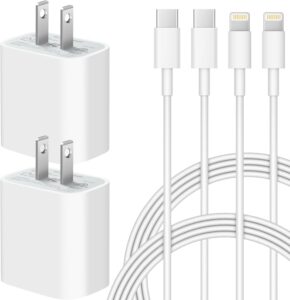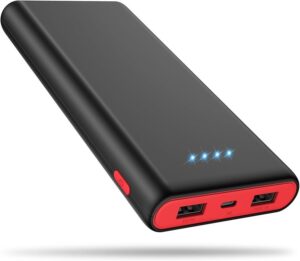Are you looking to harness the power of the sun and connect a solar panel to a battery, but not sure where to start? Well, you’ve come to the right place! In this article, we will guide you through the process of connecting your solar panel to a battery. Whether you’re a green energy enthusiast or simply want to reduce your dependence on traditional electricity sources, understanding how to connect solar panel to battery is a crucial step towards achieving your energy goals. So, let’s dive in and explore the ins and outs of this sustainable energy solution.
How to Connect Solar Panel to Battery
Introduction
In today’s world, renewable energy sources like solar power have become increasingly popular due to their environmental benefits and cost-saving potentials. Solar panels, also known as photovoltaic (PV) panels, are devices that convert sunlight into electricity. While solar panels generate electricity during the day, it is essential to have a backup system in place for times when the sun is not shining. This is where batteries come into play. Connecting solar panels to batteries allows you to store excess energy generated during the day and use it when needed. In this article, we will guide you through the process of connecting a solar panel to a battery, ensuring you can make the most of your solar power system.
Understanding Solar Panels and Batteries
Before we delve into the connection process, it is crucial to have a basic understanding of how solar panels and batteries work. This knowledge will help you make informed decisions when setting up your solar power system.
Solar Panels
Solar panels consist of multiple solar cells made from semiconductors like silicon. These cells absorb photons from sunlight, generating an electric current known as direct current (DC). The DC power produced by the solar panels needs to be converted into alternating current (AC) to be used by most household appliances. This can be done using an inverter.
Batteries
Batteries are storage devices that store electrical energy for future use. Connecting solar panels to batteries allows you to store the excess energy generated during the day and use it during nighttime or when demand exceeds supply. When choosing a battery for your solar power system, consider factors such as capacity, voltage, and lifespan to ensure it meets your energy storage needs.
Step-by-Step Guide: How to Connect Solar Panel to Battery
Now that you have a basic understanding of solar panels and batteries, let’s dive into the step-by-step process of connecting them.
Step 1: Gather the Necessary Materials
Before you begin the connection process, gather the following materials:
- Solar panels
- Charge controller
- Battery
- Wires and cables
- Disconnect switches
- Fuse boxes or breakers
- Inverter (if using AC appliances)
- Mounting hardware (if installing solar panels on a roof or structure)
- Tools (screwdrivers, wire cutters, wrenches, etc.)
Step 2: Determine the Electrical Load
Before connecting your solar panel to a battery, it is essential to calculate your electrical load. This will help you determine the size of the battery required to meet your energy needs. Calculate the wattage of all the appliances and devices you plan to power using the solar panels and estimate the number of hours you intend to use them each day.
Step 3: Positioning the Solar Panels
Identify the area where you plan to install the solar panels. Ensure it receives optimal sunlight exposure throughout the day. If installing the panels on a roof or structure, use mounting hardware to secure them in place. Follow the manufacturer’s instructions for proper installation.
Step 4: Connect the Solar Panels
Now it’s time to connect the solar panels. Follow these steps:
- Position the solar panels near the battery storage location.
- Connect the positive terminal of the first solar panel to the positive terminal of the second solar panel using a wire.
- Do the same for the negative terminals, connecting them using another wire.
- If you have more solar panels, continue connecting them in the same manner, creating a series circuit.
- Connect the positive terminal of the final solar panel to the positive terminal of the charge controller.
- Connect the negative terminal of the final solar panel to the negative terminal of the charge controller.
Step 5: Connect the Charge Controller to the Battery
The charge controller regulates the amount of charge going into the battery, preventing overcharging or damage. Follow these steps to connect the charge controller to the battery:
- Connect the positive terminal of the charge controller to the positive terminal of the battery.
- Connect the negative terminal of the charge controller to the negative terminal of the battery.
Step 6: Connect the Battery to the Load
Finally, connect the battery to the load (appliances and devices) you wish to power. Use appropriate wiring and disconnect switches for safety purposes. If you plan to power AC appliances, connect the battery to the inverter, and then connect the inverter to the load.
Maintaining and Troubleshooting
To ensure the longevity and optimal performance of your solar panel to battery connection, it is essential to perform regular maintenance and be aware of common troubleshooting tips. Here are a few key points to keep in mind:
Maintenance
- Regularly clean your solar panels to remove dust, dirt, and debris that may hinder their efficiency.
- Inspect the cables and wiring connections for any signs of wear or damage. Replace them if necessary.
- Monitor the battery’s charge level and voltage regularly to ensure it remains within the recommended range.
- Check the charge controller for any malfunctions or errors. Consult the manufacturer’s manual for troubleshooting guidance.
Troubleshooting
- If your battery is not charging, check the connections between the solar panels, charge controller, and battery. Ensure they are secure and properly connected.
- If your battery is overcharging, check the settings on your charge controller. Adjust them to prevent overcharging.
- If you notice a significant decrease in energy output, it may indicate a faulty solar panel or battery. Consult a professional to diagnose and resolve the issue.
Connecting a solar panel to a battery is a crucial step in setting up a reliable and efficient solar power system. By following the step-by-step guide provided in this article, you can ensure a successful connection and maximize the benefits of solar energy. Remember to perform regular maintenance and troubleshooting to keep your system running smoothly. Take advantage of the clean and renewable energy provided by solar power and contribute to a sustainable future.
Frequently Asked Questions
How to connect a solar panel to a battery?
Connecting a solar panel to a battery is a straightforward process. Here’s a comprehensive guide to help you:
What equipment do I need to connect a solar panel to a battery?
To connect a solar panel to a battery, you will need the following equipment:
- Solar panel(s)
- Solar charge controller
- Battery
- Inverter (optional, depending on your setup)
- Wiring and connectors
What is the purpose of a solar charge controller?
A solar charge controller is an essential component that regulates the flow of energy from the solar panel to the battery. It prevents overcharging of the battery and helps optimize the charging process for maximum efficiency and battery lifespan.
How do I connect the solar panel to the battery using a charge controller?
Follow these steps to connect your solar panel to the battery using a charge controller:
- Connect the positive (+) terminal of the solar panel to the positive (+) terminal of the charge controller.
- Connect the negative (-) terminal of the solar panel to the negative (-) terminal of the charge controller.
- Connect the positive (+) terminal of the charge controller to the positive (+) terminal of the battery.
- Connect the negative (-) terminal of the charge controller to the negative (-) terminal of the battery.
Can I directly connect the solar panel to the battery without a charge controller?
While it is possible to connect a solar panel directly to a battery, it is not recommended. Without a charge controller, the battery can be overcharged, which can reduce its lifespan. It is best to use a charge controller to regulate the charging process and protect your battery.
Do I need an inverter to connect a solar panel to a battery?
The need for an inverter depends on the type of system you have. If you are connecting a solar panel to a battery for storing energy to be used later as DC power, you may not need an inverter. However, if you plan to use AC appliances or devices, you will need an inverter to convert the stored DC power into AC power.
Final Thoughts
In conclusion, connecting a solar panel to a battery is a relatively simple process. First, ensure that you have the necessary equipment, such as a charge controller and appropriate cables. Next, connect the positive and negative terminals of the solar panel to the corresponding terminals on the battery. It is crucial to follow the correct polarity and ensure a secure connection. Finally, monitor the charging process and ensure that the battery is not overcharged. By following these steps, you can effectively connect a solar panel to a battery and harness clean, renewable energy.


